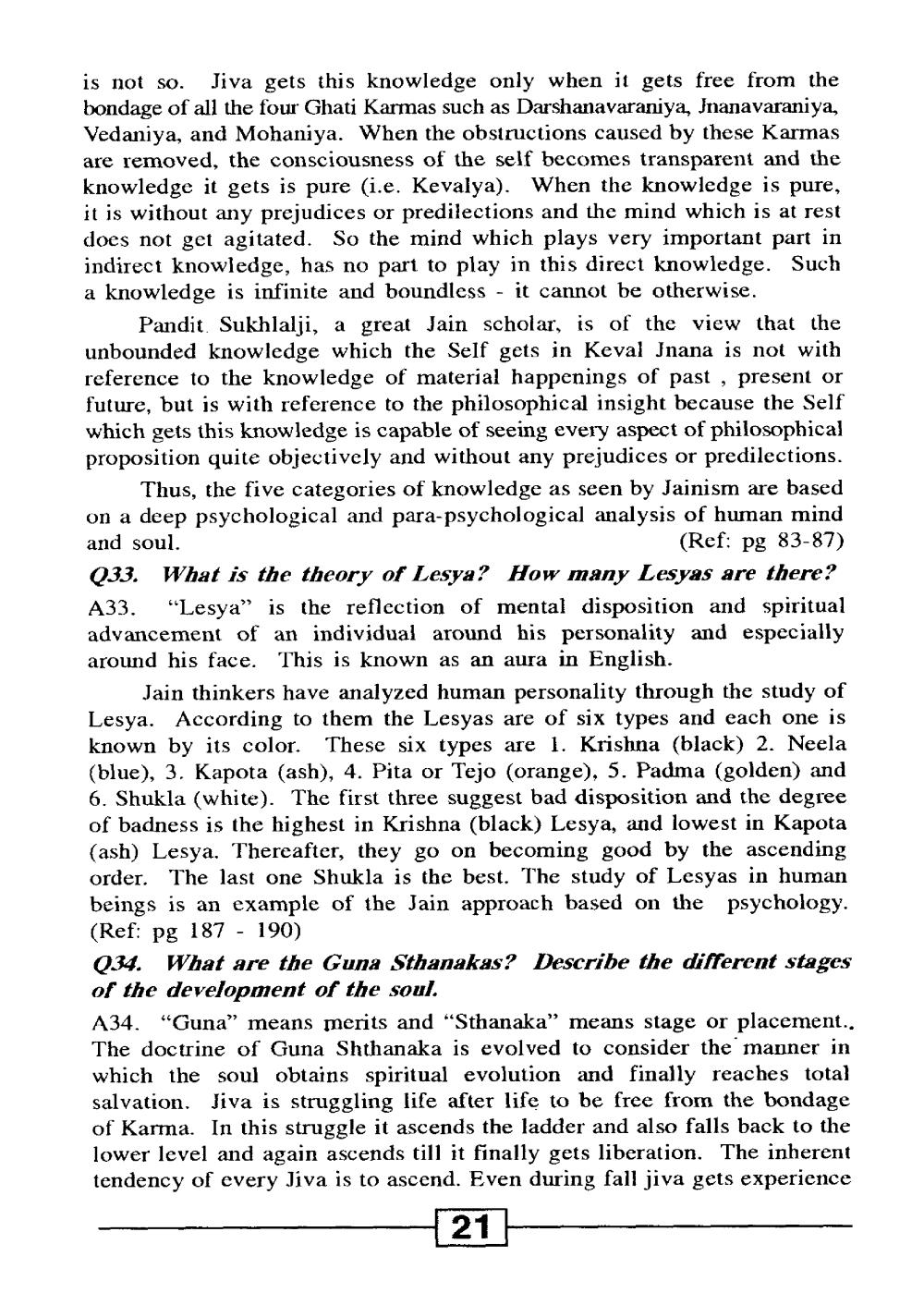________________
is not so. Jiva gets this knowledge only when it gets free from the bondage of all the four Ghati Karmas such as Darshanavaraniya, Jnanavaraniya, Vedaniya, and Mohaniya. When the obstructions caused by these Karmas are removed, the consciousness of the self becomes transparent and the knowledge it gets is pure (i.e. Kevalya). When the knowledge is pure, it is without any prejudices or predilections and the mind which is at rest does not get agitated. So the mind which plays very important part in indirect knowledge, has no part to play in this direct knowledge. Such a knowledge is infinite and boundless - it cannot be otherwise.
Pandit Sukhlalji, a great Jain scholar, is of the view that the unbounded knowledge which the Self gets in Keval Jnana is not with reference to the knowledge of material happenings of past, present or future, but is with reference to the philosophical insight because the Self which gets this knowledge is capable of seeing every aspect of philosophical proposition quite objectively and without any prejudices or predilections.
Thus, the five categories of knowledge as seen by Jainism are based on a deep psychological and para-psychological analysis of human mind and soul.
(Ref: pg 83-87) Q33. What is the theory of Lesya? How many Lesyas are there? A33. "Lesya” is the reflection of mental disposition and spiritual advancement of an individual around his personality and especially around his face. This is known as an aura in English.
Jain thinkers have analyzed human personality through the study of Lesya. According to them the Lesyas are of six types and each one is known by its color. These six types are 1. Krishna (black) 2. Neela (blue), 3. Kapota (ash), 4. Pita or Tejo (orange), 5. Padma (golden) and 6. Shukla (white). The first three suggest bad disposition and the degree of badness is the highest in Krishna (black) Lesya, and lowest in Kapota (ash) Lesya. Thereafter, they go on becoming good by the ascending order. The last one Shukla is the best. The study of Lesyas in human beings is an example of the Jain approach based on the psychology. (Ref: pg 187 - 190) 034. What are the Guna Sthanakas? Describe the different stages of the development of the soul. A34. "Guna” means merits and "Sthanaka” means stage or placement.. The doctrine of Guna Shthanaka is evolved to consider the manner in which the soul obtains spiritual evolution and finally reaches total salvation. Jiva is struggling life after life to be free from the bondage of Karma. In this struggle it ascends the ladder and also falls back to the lower level and again ascends till it finally gets liberation. The inherent tendency of every Jiva is to ascend. Even during fall jiva gets experience
1217




